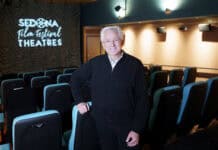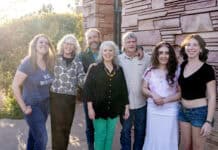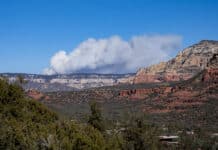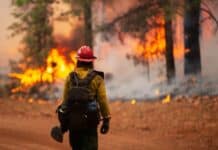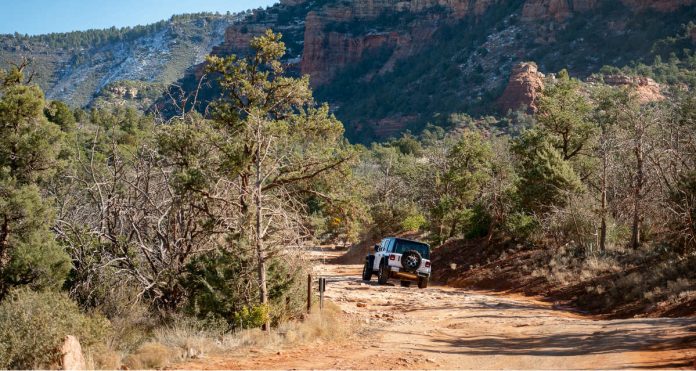
In what may be a sign of the burgeoning interest in off-highway vehicle recreation, another Sedona business has entered the local OHV rental market.
Greg Stevenson, owner of the 9- year-old Hike House, a hiking gear and guiding store on SR 179 and Schnebly Hill Road, took delivery of three new modified Jeeps just before Christmas, bringing his total fleet to four. Stevenson began renting them from the store in January.
As with the retail side of his business, Stevenson said Hike House Jeeps’ business model is to offer a high level of customer education along with the equipment. In addition to face-to-face talks, Hike House Jeeps have GPS devices pre-programmed with local destinations, a magazine guide to local attractions and real-time assistance if customers run into trouble on the trail.
“I think the Jeeps without the guide [book] is only half the equation. The other half of the equation is the level of guidance we’re going to give people as they rent from us,” Stevenson said.
Other local Jeep rental businesses offer information-rich services to renters, including guidebooks and maps of local 4×4 routes on Coconino National Forest, and at least two other local companies advertise vehicles that include GPS devices pre-programmed with local destinations.
Stevenson, and other OHV rental outfits are catering to increasing interest in accessing public lands with off-highway vehicles.
Michael Gordon, recreation and motorized use technician for the Red Rock Ranger District, said the number of OHVs, such as Jeeps, ATVs and “side-by-sides,” using forest roads has “skyrocketed” in recent years.
OHVs rented in Sedona city limits or adjacent communities add impacts to local forest roads, but they are not managed currently through a commercial permit program, unlike guided Jeep tours, in which a driver physically accompanies customers onto forest land.
Instead, forest road impacts from rented OHVs are managed in large part through an informal system of cooperation between rental and tour businesses and Red Rock Ranger District staff, according to conversations with local OHV businesses and forest personnel.
The cooperation, which has developed in recent years, includes close monitoring of popular forest roads and then quick responses — such as closing roads or actually making road repairs — based on conditions.
To facilitate the sharing of information, Gordon maintains a group text with Sedona’s local OHV guides and outfitters.
So when a Jeep-sized boulder rolled onto Schnebly Hill Road last month and reduced the road to one lane, members of the outfitter/guide community identified and helped remove the blockage. As winter storms rolled through Sedona last month, outfitter/guides provided Gordon with real-time information on road conditions and helped close roads before the storm hit.
“Because of the number of visitors both commercial and public that are going to be driving on that trail that day, he’ll make the call to lock the gate so the trail can rest so it can dry out. This is not something that we see so micromanaged in any other location that we operate in. And I’m not saying ‘micromanaged’ in the negative sense,” said Nena Barlow, owner of Barlow Jeeps, which has locations in West Sedona and Moab, Utah. “I’m saying this is what we’re doing to mitigate the sheer numbers … trying to close those trails when they need to be closed so they’re not getting destroyed.”
Barlow credits Gordon with increasing communication and cooperation between OHV businesses and the forest in recent years — a change from earlier times when the relationships among competing businesses and the forest were less friendly.
“He really spearheaded us all talking to each other because not all of those companies have necessarily been very forthright in information sharing in the past. So he’s kind of opened some of those communication doors,” she said.
OHV-based business contributions of labor to monitor and repair roads are given on a voluntary basis. In the case of permitted OHV guides, the labor is given on top of the 3% of revenue paid to the forest.
“If we didn’t have their help,” Gordon said, “we’d have to go through a big process [to repair forest roads].”
Stevenson believes his high-information model of Jeep rental will be consistent with the District’s management of growing OHV use, stating his view that pre-programmed GPS devices and detailed trip itineraries will help disperse visitors away from the most-popular trails.
But he also thinks renting OHVs and allowing customers to explore on their own is consistent with changing tastes in the tourism market.
“I think there’s more and more people who say, ‘I want to go discover Sedona on my own’ …. I think part of adventure is that exploration and that navigating and just doing it on your own, and we think those [Jeeps] are the conduit to that.”


